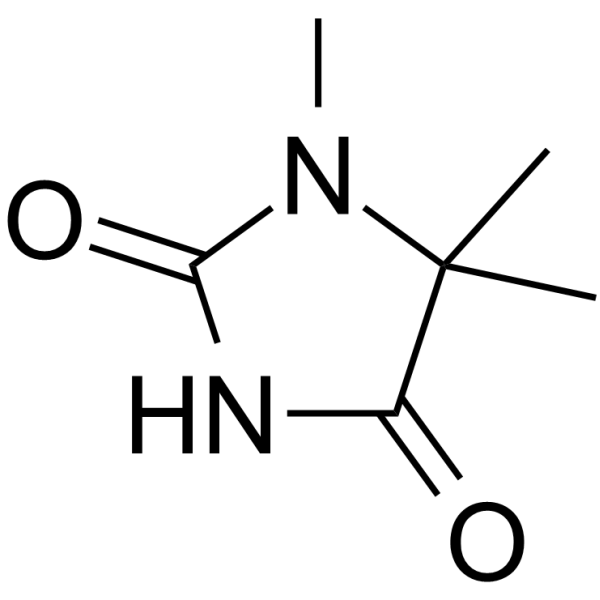
1,5,5-Trimethylhydantoin
CAS No. 6851-81-6
1,5,5-Trimethylhydantoin( TMH )
Catalog No. M27518 CAS No. 6851-81-6
1,5,5-Trimethylhydantoin (TMH) is a non-isotopic internal standard (IS).
Purity : >98% (HPLC)
 COA
COA
 Datasheet
Datasheet
 HNMR
HNMR
 HPLC
HPLC
 MSDS
MSDS
 Handing Instructions
Handing Instructions
| Size | Price / USD | Stock | Quantity |
| 100MG | 38 | In Stock |


|
| 200MG | Get Quote | In Stock |


|
| 500MG | Get Quote | In Stock |


|
| 1G | Get Quote | In Stock |


|
Biological Information
-
Product Name1,5,5-Trimethylhydantoin
-
NoteResearch use only, not for human use.
-
Brief Description1,5,5-Trimethylhydantoin (TMH) is a non-isotopic internal standard (IS).
-
Description1,5,5-Trimethylhydantoin (TMH) is a non-isotopic internal standard (IS).
-
In Vitro——
-
In Vivo——
-
SynonymsTMH
-
PathwayOthers
-
TargetOther Targets
-
RecptorHIV-1 reverse transcriptase
-
Research Area——
-
Indication——
Chemical Information
-
CAS Number6851-81-6
-
Formula Weight142.158
-
Molecular FormulaC6H10N2O2
-
Purity>98% (HPLC)
-
SolubilityIn Vitro:?DMSO : 100 mg/mL (703.43 mM)
-
SMILESCN1C(=O)NC(=O)C1(C)C
-
Chemical Name——
Shipping & Storage Information
-
Storage(-20℃)
-
ShippingWith Ice Pack
-
Stability≥ 2 years
Reference
1.Han S, et al. Molecular Hybridization-Inspired Optimization of Diarylbenzopyrimidines as HIV-1 Nonnucleoside Reverse Transcriptase Inhibitors with Improved Activity against K103N and E138K Mutants and Pharmacokinetic Profiles. ACS Infect Dis. 2019 Oct 24.
molnova catalog



related products
-
androsin
Androsin isolated from Picrorhiza Kurroa Royle ex Benth has anti-asthmatic effects.
-
Ribonuclease A
Ribonuclease A (RNase A) is a potent endonuclease that removes RNA during dna and protein preparation.
-
Enoblituzumab
Enoblituzumab is a humanized IgG1 κmab monoclonal antibody that recognizes human B7-H3 protein and can be used to study solid tumors such as non-small cell lung cancer (NSCLC).



 Cart
Cart
 sales@molnova.com
sales@molnova.com


